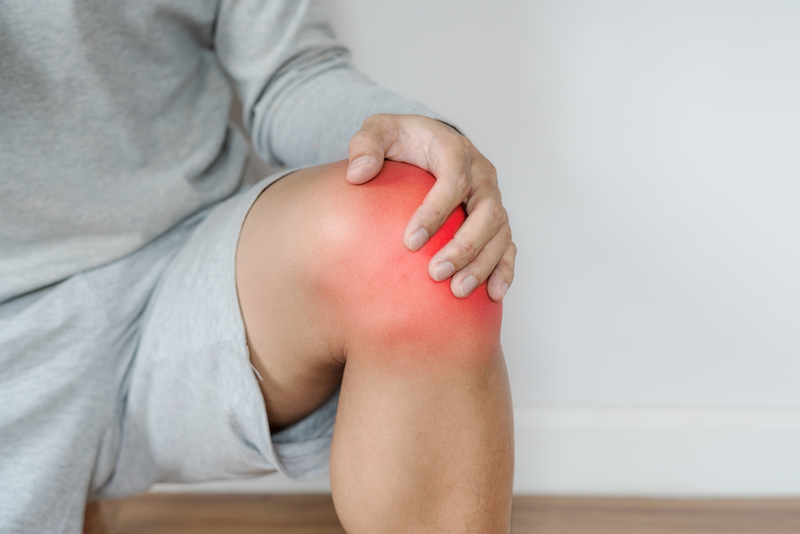Back to Basics: All About Joint Pain and How to Treat It
Joint pain is a widespread phenomenon that affects countless individuals worldwide. It manifests as discomfort, soreness, or inflammation in one or multiple joints of the body, often hindering mobility and diminishing the overall quality of life. From the knees and hips to the hands and shoulders, joint pain can arise from various causes, including age-related wear and tear, injury, or underlying medical conditions. Whether it’s the dull ache of osteoarthritis or the sharp twinge of an acute injury, understanding joint pain is crucial in navigating its management and seeking appropriate treatment. In this article, we delve into the intricacies of joint pain, exploring its common sources, symptoms, and the various factors that contribute to its development. By unraveling the complexities of joint pain, we can gain insights into effective strategies for relief, enabling individuals to regain comfort, mobility, and an improved quality of life.
Common causes of joint pain include:
-
Osteoarthritis: The most prevalent form of arthritis, characterized by the breakdown of cartilage and the subsequent rubbing of bones, leading to joint pain, stiffness, and reduced range of motion.
-
Rheumatoid arthritis: An autoimmune disease in which the immune system attacks the synovial lining of the joints, causing inflammation, pain, swelling, and potential joint deformity.
-
Injury or trauma: Joint pain can result from acute injuries, such as fractures, dislocations, sprains, or strains, which cause damage to the joint structures.
-
Overuse or repetitive strain: Engaging in repetitive motions or subjecting the joints to excessive strain over time can lead to joint pain, commonly seen in conditions like tendinitis or bursitis.
-
Gout: A type of arthritis caused by the buildup of uric acid crystals in the joints, resulting in sudden, intense episodes of joint pain, often affecting the big toe.
-
Infection: Joint pain can be a symptom of infectious conditions like septic arthritis, where bacteria, viruses, or fungi invade the joint space.
-
Other medical conditions: Joint pain may be associated with certain systemic diseases, such as lupus, fibromyalgia, Lyme disease, or certain types of cancer.
There are also less common and less well known causes of joint pain that include:
-
- Weather Changes: Some individuals report that their joint pain worsens with changes in weather, particularly in colder and damp conditions. While the exact reasons are unclear, it may be due to changes in barometric pressure, temperature, or humidity affecting joint fluid and nerve sensitivity.
- Sleep and Pain Connection: Lack of quality sleep can contribute to increased joint pain. Poor sleep disrupts the body’s natural healing processes and can lower pain threshold, amplifying the perception of joint discomfort.
- Weight Management Impact: Maintaining a healthy weight is crucial for joint health. Excess weight puts added stress on weight-bearing joints, increasing the risk of joint pain and accelerating conditions like osteoarthritis.
- Hormonal Influence: Hormonal changes in women, particularly during menopause, can affect joint health. Fluctuations in estrogen levels have been linked to increased joint pain and stiffness.
- Psychological Factors: Emotional stress and psychological well-being can influence the perception and experience of joint pain. Chronic stress, anxiety, and depression can exacerbate pain symptoms and impact the body’s response to pain.
- Exercise Benefits: While exercise may seem counterintuitive for joint pain, appropriate physical activity is essential for joint health. Regular exercise helps maintain joint mobility, strengthens supporting muscles, and promotes the release of endorphins, which can alleviate pain.
- Joint-Friendly Exercises: Low-impact activities like swimming, cycling, and yoga are gentle on the joints while still providing numerous health benefits. These exercises can improve joint flexibility, strengthen muscles, and reduce pain without excessive stress on the joints.
- Nutritional Impact: Certain foods, like those rich in omega-3 fatty acids (found in fatty fish, flaxseeds, and chia seeds), may have anti-inflammatory properties that can help reduce joint pain. A balanced diet with adequate nutrients supports overall joint health.
- Mind-Body Approaches: Mindfulness techniques, such as meditation and deep breathing exercises, have been shown to reduce pain perception and improve coping mechanisms for individuals with joint pain.
- Complementary Therapies: Alternative therapies like acupuncture, massage, and heat/cold therapy may offer relief for some individuals by promoting relaxation, improving circulation, and reducing inflammation.
Regardless of what is causing your joint pain, managing it often involves a comprehensive approach that may include:
- Rest and avoiding activities that aggravate the pain
- Applying ice or heat to the affected joint
- Over-the-counter pain relievers or anti-inflammatory medications
- Physical therapy and strengthe training exercises to improve joint strength and flexibility
- Assistive devices, such as braces or canes, to support the joints
- Lifestyle modifications, including maintaining a healthy weight, eating a balanced diet, and managing stress
- In some cases, medical interventions like corticosteroid injections or surgical procedures may be necessary.
It is important to consult with a healthcare professional for an accurate diagnosis and personalized treatment plan based on the specific cause and severity of joint pain.
By considering these commonly known and lesser-known aspects of joint pain, individuals can gain a more comprehensive understanding of the condition and explore various strategies to manage and alleviate their discomfort. Remember, consulting with a healthcare professional is essential for an accurate diagnosis and tailored treatment plan based on individual needs.








